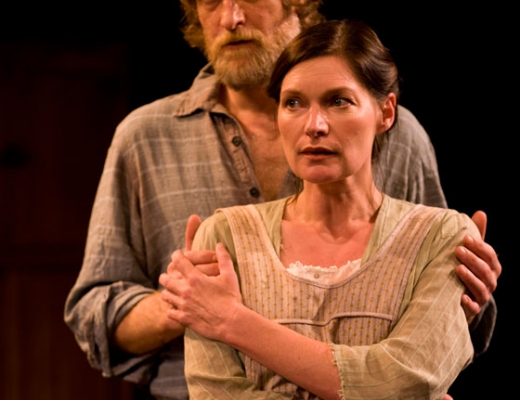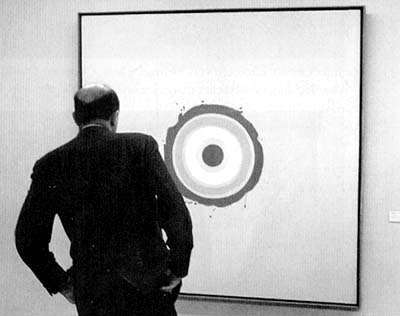 Satchmo at the Waldorf was successful in every way. The house was sold out and the audience gave every indication of loving the show from start to finish. I had no idea that it was so funny. The first act actually played like a comedy. Not so the second half of the second act, which was received in a rapt hush. As for the cheers at the end…well, let’s just call them damned gratifying.
Satchmo at the Waldorf was successful in every way. The house was sold out and the audience gave every indication of loving the show from start to finish. I had no idea that it was so funny. The first act actually played like a comedy. Not so the second half of the second act, which was received in a rapt hush. As for the cheers at the end…well, let’s just call them damned gratifying.
I could spend a lot of time thanking a lot of people, and believe me, I will—but not just yet. I got home a half-hour ago, and I’m so tired I could drop. For now, let me just say that were it not for Hilary Teachout, my beloved Mrs. T, I’d have never worked up the nerve to write my first play, much less to see it through seventeen painstakingly revised drafts and onto the stage of Orlando’s Mandell Theatre. All praise to Dennis Neal, Rus Blackwell, and the rest of my wonderful colleagues, but she comes first.
More anon, but I’ll close with the final speech of the play:
ARMSTRONG (raising his voice) I’m just about done, sugar. (As before) Guess Lucille’s right. Done told my story, said what I gotta say. And now I gotta get to bed, get me some rest like the doc says. Got two shows to play tomorrow, gotta take care of myself. You wanna please the people, get you a good night’s sleep. Playing that pretty music every night take a lot out of an old man.
He puts on his glasses and picks up his trumpet case.
You go that way, I go this way. And we gonna do it all over again tomorrow night. Just like always.
He opens the dressing-room door, switches off the light, and exits, closing the door behind him. Blackout.
See you next week.
UPDATE: To view an album of photos shot at the dress rehearsal of Satchmo at the Waldorf, go here.

 In his riveting Hartford Stage revival of “The Crucible,” Gordon Edelstein has shrewdly cut the play loose from its familiar 17th-century moorings. Ilona Somogyi’s costumes and Eugene Lee’s bare-bones set suggest that the play is taking place early in the 20th century, possibly in the Bible Belt around the time of the Scopes trial. On the other hand, Michael Chybowski has lit the courtroom with fluorescent fixtures that are as modern-looking as a flat-screen TV. The effect is deliberately disorienting, and no sooner is the audience thrown off balance than Mr. Edelstein moves in for the kill. From the slap-in-the-face coup de théâtre that launches the play to the death march that drives it to a thunderous close, this “Crucible” will send your pulse rate shooting through the roof….
In his riveting Hartford Stage revival of “The Crucible,” Gordon Edelstein has shrewdly cut the play loose from its familiar 17th-century moorings. Ilona Somogyi’s costumes and Eugene Lee’s bare-bones set suggest that the play is taking place early in the 20th century, possibly in the Bible Belt around the time of the Scopes trial. On the other hand, Michael Chybowski has lit the courtroom with fluorescent fixtures that are as modern-looking as a flat-screen TV. The effect is deliberately disorienting, and no sooner is the audience thrown off balance than Mr. Edelstein moves in for the kill. From the slap-in-the-face coup de théâtre that launches the play to the death march that drives it to a thunderous close, this “Crucible” will send your pulse rate shooting through the roof…. In his lifetime, Greenberg’s art collection was so admired that Vogue ran a story in 1964 that was illustrated by glossy photographs of his Manhattan apartment, whose walls were covered with paintings. It was quite a sight to see—but it led certain savvy readers to wonder how an art critic, even one as celebrated as Greenberg, had managed to assemble a 155-piece collection of works by some of the most famous American artists of the 20th century. Was he rich? Far from it. The works in his collection were all presented to him as gifts by the grateful artists about whom he wrote. Not only did he accept such gifts, but he sold them whenever he needed money—and after his death in 1994, Greenberg’s widow sold the remaining works in his collection to the Portland Art Museum for two million dollars.
In his lifetime, Greenberg’s art collection was so admired that Vogue ran a story in 1964 that was illustrated by glossy photographs of his Manhattan apartment, whose walls were covered with paintings. It was quite a sight to see—but it led certain savvy readers to wonder how an art critic, even one as celebrated as Greenberg, had managed to assemble a 155-piece collection of works by some of the most famous American artists of the 20th century. Was he rich? Far from it. The works in his collection were all presented to him as gifts by the grateful artists about whom he wrote. Not only did he accept such gifts, but he sold them whenever he needed money—and after his death in 1994, Greenberg’s widow sold the remaining works in his collection to the Portland Art Museum for two million dollars.